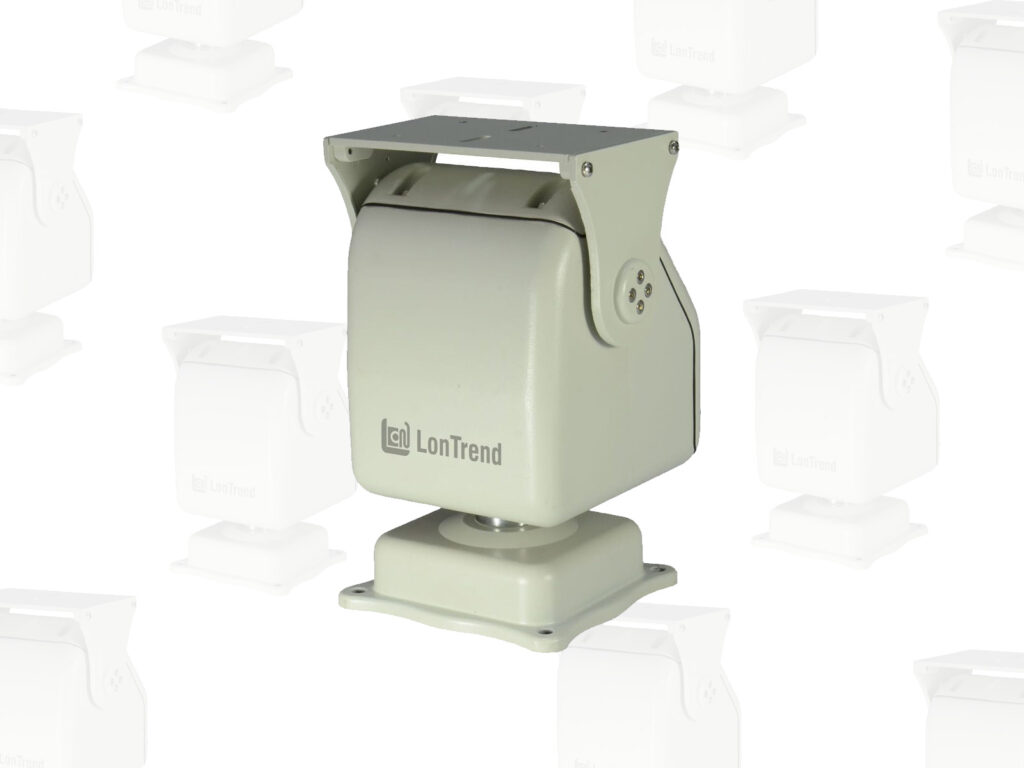Enter your details below to download the product catalogue.

A Guide to Pan-Tilt Positioners: Features, Selection, and Use Cases In industries where precision monitoring and remote control are critical, pan-tilt positioners play a vital role. From defence surveillance and border security to industrial and offshore monitoring, these systems provide smooth, accurate control of cameras, sensors, and antennas. By enabling wide coverage, flexible movement, and reliable positioning, pan-tilt positioners help operators make better decisions in real time. This guide will break down what pan-tilt positioners are, their key specifications, how to select the right one, and the industries where they are most widely used. What is a Pan-Tilt Positioner? A pan-tilt positioner (PTP) is a mechanical device designed to control the orientation of equipment, usually cameras, sensors, or antennas. Pan refers to horizontal rotation (side to side). Tilt refers to vertical movement (up and down). Unlike consumer-grade pan-tilt camera heads, industrial-grade positioners are built to handle higher payloads, extreme environments, and continuous operation. They are widely used in security, defence, marine, and industrial automation systems. Key Features and Specifications of Pan-Tilt Positioners When evaluating pan-tilt positioners, engineers and system integrators usually focus on the following parameters: 1. Pan Speed &…

Frame-Based Imaging vs. Event-Based Imaging: What’s the Difference and Why It Matters In the rapidly evolving world of computer vision and machine learning, imaging systems play a central role across industries, from robotics to medical devices. Traditional imaging has long relied on frame-based approaches, but a newer alternative, event-based imaging, is gaining traction due to its speed and efficiency. Understanding the differences between these two paradigms can help engineers and researchers select the right technology for their needs. What is Frame-Based Imaging? Frame-based imaging refers to the conventional method of capturing visual data in the form of full frames at regular intervals. Each frame captures the entire scene at once, regardless of whether any part of the image has changed since the last capture. This method is common in most digital cameras and uses CMOS or CCD sensors to generate colour or grayscale images. This system is well-suited to static or predictable environments, where capturing the full image at consistent intervals provides enough information. However, it can be inefficient in dynamic scenes, where much of the data in each frame may remain unchanged. Additionally, frame-based systems can suffer from motion…

A Comprehensive Guide to IR Lenses: SWIR, LWIR, and Their Role in Imaging Infrared (IR) imaging has become a crucial technology in various industries, from security and defence to industrial inspection and scientific research. Unlike visible light imaging, IR cameras rely on capturing infrared radiation emitted or reflected by objects. However, to achieve clear and precise imaging, specialized IR lenses are essential. Choosing the right IR lens depends on multiple factors, including the wavelength range, focal length, and intended application. This article explores different types of IR lenses—particularly Shortwave Infrared (SWIR) and Longwave Infrared (LWIR) lenses—their applications, the importance of Detection, Recognition, and Identification (DRI), and the differences between fixed focal, varifocal, and zoom lenses. Understanding the Infrared Spectrum and IR Lenses Infrared light is a segment of the electromagnetic spectrum that extends beyond visible light. It is generally categorized into: Near-Infrared (NIR): 0.7 µm – 1.0 µm Shortwave Infrared (SWIR): 0.9 µm – 1.7 µm Midwave Infrared (MWIR): 3 µm – 5 µm Longwave Infrared (LWIR): 8 µm – 14 µm Each range serves different applications, with SWIR and LWIR being particularly important for imaging and thermal detection. Why…

The Role of Polarization Imaging in Machine Vision [2025] In the world of machine vision, the demand for higher image clarity and more accurate defect detection is constantly growing. Industries rely on advanced imaging technologies to inspect products, detect flaws, and ensure quality control. One such innovation is polarization imaging, which has gained significant traction in recent years. By integrating the power of light polarization into machine vision systems, companies are able to see beyond the capabilities of traditional cameras. In this article, we will explore the role of polarization imaging in machine vision, its benefits, and how it is transforming industries in 2025. What is Polarization Imaging? To understand polarization imaging, we first need to grasp the concept of polarization in light. Polarization refers to the direction in which light waves oscillate. Most light from natural sources (like the sun) is unpolarized, meaning the light waves oscillate in all directions. However, when light interacts with surfaces or materials, some of it becomes polarized, causing the oscillations to align in a specific direction. Polarization imaging involves capturing these changes in light’s polarization to reveal valuable information that might be hidden…

Exploring SWIR Cameras: A Detailed Walkthrough of Atlas and Triton Series For decades, visible-range cameras have helped us uncover deep insights while imaging objects across industries and applications. But they have limitations. A few among them being poor vision under hazy or smoky conditions, limited penetration through opaque materials, and false colour interpretations. These limitations have sparked the fast-paced transition towards Short-Wave Infrared (SWIR) imaging over the last few decades. SWIR cameras use a special type of sensor that can detect light invisible to the human eye, thereby unlocking a whole new world of possibilities across industries. Overlapping the visible and near-infrared regions of the electromagnetic spectrum, its wavelength band extends from 900 to 2500 nm. SWIR offers enhanced visibility under challenging environments, penetrates silicon, plastic and other opaque materials with ease, and has the ability to differentiate between materials for precise identification and sorting. In short, SWIR cameras address all the inherent shortcomings of conventional visible-range cameras and have broadened the horizons of imaging across industries. Key Applications of SWIR Vision Systems Fruit & Food inspection: SWIR is sensitive to water and can be used to examine moisture content…

The Ultimate Guide on Short Wave Infrared (SWIR) While the human eye is an extraordinary creation that can perceive a vast spectrum of colors, there lies a wide spectrum of light beyond the visible range, waiting to be explored. The Infrared (IR) radiation extends beyond the visible spectrum of light (400 – 700 nm) and has a wavelength ranging from 700 – 1,000,000 nanometers (nm). This spectrum consists of four distinct wavebands such as the Near Infrared (NIR), Mid-Wave Infrared (MWIR), Short-Wave Infrared (SWIR), and Long-Wave Infrared (LWIR). While the NIR range is used for medical imaging and food inspection, LWIR finds its applications in thermal imaging and night vision. SWIR imaging falls between NIR and LWIR, and it is typically used for high-resolution imaging in the visible and infrared spectrum. In this blog, we would be specifically examining SWIR in detail including its properties, benefits and what possibilities that lie ahead. What is Short Wave Infrared or SWIR imaging? SWIR is the short wavelength portion of the infrared spectrum and occupies the segment between the visible and mid-infrared wavelengths. It cannot be seen by the human eye or detected…

The Infinite Possibilities of Non Visible Imaging & How to Embrace It Machine vision and image processing systems have been able to achieve breakthroughs across industries by measuring or inspecting complex objects of varied shapes, sizes and materials.However, a vast majority of these systems have been traditionally designed to operate in the visible light range of the electromagnetic spectrum. This is the range of light that the human eye can detect and have wavelengths ranging from 400 – 700 nanometers (nm). But, that is just the tip of the iceberg! With the applications of machine vision going full steam in the visible range, tech enthusiasts are now exploring frontiers beyond the visible spectrum. Adding to the shift, technology advancements in vision systems have also evolved beyond the visible range and are now delivering the same precision across spectrums outside the visible range. Let’s dive into the slew of applications of non-visible imaging and the prerequisites to extract the best results. Non Visible Imaging Radiations: Infrared, Thermal and Ultraviolet The electromagnetic (EM) spectrum consists of the entire range of electromagnetic radiations with varying frequencies, wavelengths and photon energies. Considering wavelength, the…